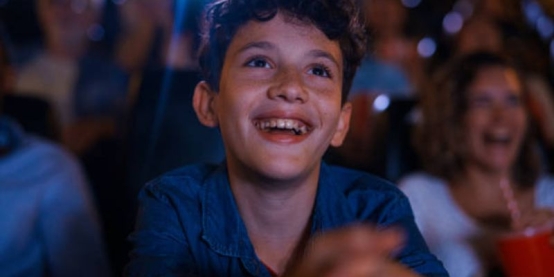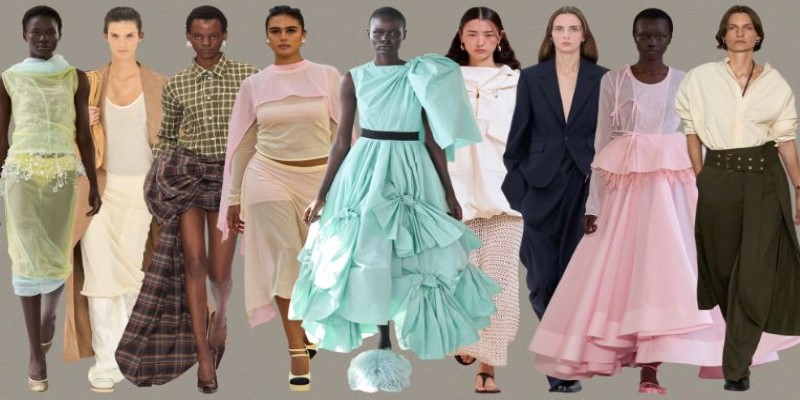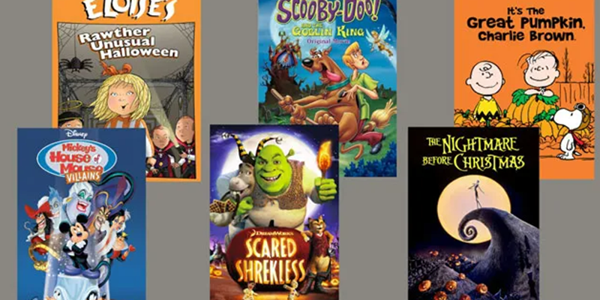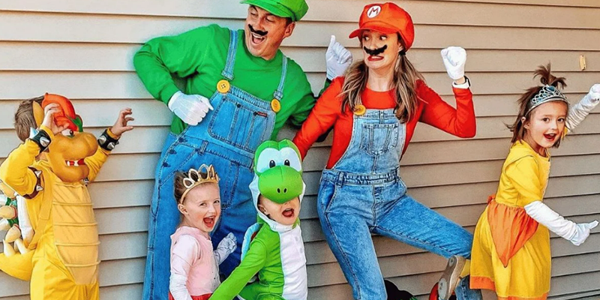TV Shows
20+ TV Shows That Make You Laugh and Cry
Television has a rare power: to make someone smile one moment and ache the next. Some series don’t settle in just the laughter or the tears—they traverse both. These “laugh-and-cry” shows linger in the mind because they mirror life’s complexity.
Television has a rare power: to make someone smile one moment and ache the next. Some series don’t settle in just the laughter or the tears—they traverse both. These “laugh-and-cry” shows linger in the mind because they mirror life’s complexity.
Dramedies—stories blending comedy with drama—have reshaped modern television. They resist the simplicity of pure sitcoms or pound-you-over-the-head tragedies. They allow space for levity amid sorrow, humor amid heartbreak. Below is a thoughtfully curated list of shows that walk that line with grace.
What Makes a Show Both Funny and Heartbreaking?
Defining the “Laugh-and-Cry” Genre
A “laugh-and-cry” show (often called a dramedy) mixes comedic elements and dramatic stakes. It assumes life is messy: joys and sorrows coexisting.

The Balance: Humor, Relatability, and Realism
To succeed, these shows require:
Witty writing that lands laughs without undercutting emotional truth
Vulnerability in characters so audiences care about their struggles
Situations grounded in real life (loss, relationships, failure, identity)
Tonality control (knowing when to lean into humor, when to let moments breathe)
When a show lets a joke land and then lets silence settle—moments like that begin to matter deeply.
Storytelling Elements That Help
Supporting characters as emotional counterpoints
Recurring themes of regret, hope, or redemption
Use of montage, music, or visual metaphors to deepen emotional impact
Episodic arcs that escalate stakes gradually
Together, these strategies let a series surprise with laughter one minute and break your heart the next.
Best TV Shows That Make You Laugh and Cry (Top Picks)
Each of the following hits emotional highs and lows in its own way.
Ted Lasso (2020–present, Apple TV+)
Premise: An optimistic American football coach is hired to lead a British soccer team, despite knowing little about the sport.
Why it makes you laugh and cry: Ted’s relentless positivity often juxtaposes with real pain—grief, self-doubt, mental health struggles. The humor provides relief, but the show doesn’t shy away from emotional vulnerability.
Highlight moments: The episodes “The Hope That Kills You” and “Sunflowers” tend to land emotional gut punches.
Recognition: Emmy winner (e.g. Outstanding Comedy Series).
This Is Us (2016–2022, NBC / Hulu)
Premise: The lives of the Pearson family across multiple decades, weaving past and present.
Why it makes you laugh and cry: Emotional layering is built into its very structure. Comedy arises in family banter; heartbreak in loss, illness, and regret.
Highlight moments: The “Day You Were Born” and “That’ll Be the Day” episodes are signature tear-jerkers.
Recognition: High ratings on IMDb and Peabody awards.
The Good Place (2016–2020, Netflix)
Premise: A woman mistakenly enters the afterlife’s “Good Place” and must hide her moral imperfections.
Why it makes you laugh and cry: Its conceptual humor is clever, but the real tears come from identity, relationships, and sacrifice arcs.
Highlight moments: Season 2’s “Dance of Death” and the finale carry emotional weight.
Recognition: Critics lauded its inventive writing and philosophical heart.
Brooklyn Nine-Nine (2013–2021, Peacock / Hulu)
Premise: A squad of detectives in the NYPD navigate crime-solving and each other’s quirks.
Why it makes you laugh and cry: Mostly a comedy, but it tackles serious topics—loss, addiction, systemic issues—without ever feeling gratuitous.
Highlight moments: Episodes like “Bureau” (Jake’s grief) and “Safe House.”
Recognition: Strong IMDb rating and Emmy nods for acting and writing.
Scrubs (2001–2010, Hulu / streaming)
Premise: A young doctor’s internship and growth among quirky colleagues.
Why it makes you laugh and cry: Surreal humor and fantasy sequences contrast with stark realities of death, burnout, love, and failure.
Highlight moments: “My Finale” and “My Last Words” episodes are frequently cited for emotional impact.
Recognition: Cult favorite; praised for innovating tone in medical comedy.
BoJack Horseman (2014–2020, Netflix)
Premise: A washed-up anthropomorphic horse actor navigates addiction, regret, and relationships.
Why it makes you laugh and cry: Its dark humor undercuts painful truths about depression, identity, and legacy.
Highlight moments: The “Time’s Arrow” or “Free Churro” episodes.
Recognition: Widely praised for genre bending and emotional seriousness.
Fleabag (2016–2019, Prime Video)
Premise: A sharp, self-destructive woman living in London copes with grief, love, and family.
Why it makes you laugh and cry: It breaks the fourth wall to reveal inner thoughts. The dark humor serves more profound emotional revelations.
Highlight moments: The Season 2 finale is often described as devastating.
Recognition: Emmy awards and critical acclaim; Phoebe Waller-Bridge as writer/actor is widely celebrated.

Atypical (2017–2021, Netflix)
Premise: A teen on the autism spectrum seeks independence while his family evolves.
Why it makes you laugh and cry: Situational humor arises naturally from differences; emotional cores explore love, identity, change.
Highlight moments: Episodes that deal with family tension or transitions.
Recognition: Praised for sensitivity in representation.
Parenthood (2010–2015, Peacock)
Premise: The multi-generational Braverman family deals with life decisions, parenting, loss.
Why it makes you laugh and cry: Family dynamics allow both comedic relief and deep emotional stakes—illness, ambition, forgiveness.
Highlight moments: “May God Bless and Keep You Always.”
Recognition: Steady fan base, strong IMDb rating.
Modern Family (2009–2020, Hulu / ABC)
Premise: Several interconnected households form a modern extended family, filmed mockumentary-style.
Why it makes you laugh and cry: Mostly comedic, but it touches on adoption, aging, identity, and changing family roles.
Highlight moments: Finale episodes, episodes dealing with loss or milestones.
Note: It maintained strong critical and audience acclaim.
Jane the Virgin (2014–2019, Netflix)
Premise: A young woman accidentally artificially inseminated must manage relationships, family, and secrets.
Why it makes you laugh and cry: It balances telenovela tropes with real heart—loyalty, identity, dreams.
Highlight moments: Emotional mid-season turns, unexpected deaths.
Recognition: Praise for tone blending and narrative inventiveness.
Shameless (2011–2021, Netflix / Showtime)
Premise: A chaotic working-class family navigates addiction, relationships, and survival.
Why it makes you laugh and cry: Crude humor masks raw vulnerability—poverty, mental health, crime, love.
Highlight moments: Fiona’s tragedies, Frank’s downfalls.
Recognition: Strong cult following, some acting awards.
The Marvelous Mrs. Maisel (2017–present, Prime Video)
Premise: In the late 1950s/60s, a housewife pursues stand-up comedy after her marriage falls apart.
Why it makes you laugh and cry: Its vibrant humor contrasts with deep themes of reinvention, loss, and identity.
Highlight moments: Stand-up interludes often carry emotional reveals.
Recognition: Multiple Emmy wins, critical praise.
Sex Education (2019–present, Netflix)
Premise: Teenagers, parents, and teachers explore sexuality, identity, and relationships in a British high school.
Why it makes you laugh and cry: Frank, awkward humor about sex; emotional arcs about acceptance, grief, and growth.
Highlight moments: Scenes dealing with loss or major turning points.
Recognition: Strong fan base and critical acclaim for blending humor and real issues.
After Life (2019–2022, Netflix)
Premise: A widower resolves to live long enough to punish the world until kindness forces him to reconnect.
Why it makes you laugh and cry: Humor is bleak and sharp; grief is central. It feels like therapy in show form.
Highlight moments: Scenes confronting loss and human connection.
Recognition: Loved for its honesty and tonal balance.
Hidden Gems: Underrated Shows That Balance Humor and Heart
These shows may not have blockbuster hype, but they deliver strong emotional resonance:
Trying (Apple TV+): explores infertility, family, and adoption with humor and tenderness
Derry Girls (Netflix / Channel 4): wry, irreverent humor against backdrop of political tension in Northern Ireland
Shrinking (Apple TV+): therapists, grief, and boundaries—comedy tempered with emotional risk
Better Things (FX / Hulu): mother–daughter dynamics, aging, ambition, and quiet vulnerability
My Mad Fat Diary (E4 / Hulu): mental health, identity, and teenage life seen through both sarcasm and sincerity
These shows dig deep into friendship, loss, growth, and identity while never abandoning humor entirely.
Why We’re Drawn to Shows That Make Us Laugh and Cry
Laughter Relieves, Tears Cleanse
Humor gives release. Tears provide catharsis. When paired, they feel authentic—one doesn’t negate the other.
They Mirror Real Life
Life isn’t one-toned. Happy moments often carry shadows. Sad ones are rarely devoid of absurdity. These shows reflect that texture.
Stronger Emotional Memory
Scenes that blend laughter and heartbreak stay with us. A purely comedic or dramatic show often fades faster emotionally.
Deeper Character Investment
Because stakes feel real, viewers invest. When a show lets characters fail, suffer, and still keep going, it earns our empathy.

Where to Stream These Shows (By Platform)
Below is a streamlined guide—keep in mind regional availability may vary:
Netflix
BoJack Horseman
Sex Education
After Life
Hulu / Peacock / Streaming services tied to networks
Scrubs
Modern Family
Parenthood
Ted Lasso
Trying
Prime Video
Fleabag
The Marvelous Mrs. Maisel
This grouping helps you check a handful of platforms first. If something isn’t available in your region, a search for alternative local streaming services or licensing may help.
If You Loved These, Try These (Mood-Based Recommendations)
For comfort and warmth:
Parks and Recreation
Schitt’s Creek
For darker humor and introspection:
Barry
Dead to Me
For family and relationship drama:
Gilmore Girls
A Million Little Things
For quirky emotional storytelling:
Russian Doll
Please Like Me
How to Pick Your Next Emotional Comfort Show
Here’s a simple decision guide:
Length: Want short, bingeable? Try Fleabag or After Life. Prefer long arcs? This Is Us or Parenthood.
Tone weight: Want uplifting core? Ted Lasso, Modern Family. Prefer more emotional weight? BoJack Horseman, After Life.
Theme focus: Grief? After Life. Family dynamics? Parenthood or This Is Us. Identity and growth? Sex Education, Atypical.
Start by matching your mood today. If you want to feel uplifted, start with Ted Lasso. If you’re ready to dive deep, BoJack Horseman may be next.
The Beauty of Dual Emotions in Storytelling
Shows that make you laugh and cry have a rare gift: they recognize that joy and sorrow coexist. They invite viewers into worlds where messy, contradictory emotions are valid. The TV shows that make you laugh and cry endure not just for their writing or performances, but because they validate the full spectrum of human feeling. In them, audiences find characters who feel like people—flawed, hopeful, hurting—and in that recognition, something grows inside us too.
Sources
Celebrity
Celebrities Who Live Completely Normal Lives Now
September 4, 2025
Outfit Ideas
Cute Halloween Costumes For Boys And Girls
September 10, 2025
Celebrity
12 Famous Actors Who Got Their Big Break By Accident
August 31, 2025
Movies
The Perfect Gift For Cinephiles: Where To Buy The Best Movie Gift Cards
August 12, 2025
Movies
WATCH FREE Movies: The Streaming Services Still Offering Long Free Trials
August 10, 2025
TV Shows
Laugh Out Loud: TV Shows With The Funniest Ensemble Casts
August 26, 2025

Outfit Ideas
The 8 Most In-Demand Fashion Trends Of 2025
September 9, 2025

Movies
Best Halloween Movies For Kids & Families: Fun, Cute, And Not Too Scary
August 12, 2025

TV Shows
7 Classic Family Sitcoms Worth Revisiting
September 11, 2025

TV Shows
Binge-Worthy TV Shows Perfect For Family Movie Nights
August 30, 2025

Celebrity
This Is How Much Your Favorite Celebrity Is Really Worth In 2025
August 19, 2025

Outfit Ideas
Cute And Funny Family Halloween Costumes For Families Of 3–6
August 23, 2025